Cow Killers are a species of wasps that mimic ants. These types of wasps have a very painful sting which has led to the assumption they can kill animals.
The mimicry tactics of the species go as far as coloring, as they take on a different appearance compared to other wasps as well as locomotion.
Female Cow Killer wasps don’t have wings and they only move on the ground, with fast short bursts similar to actual ants.
While highly painful, the sting of Cow Killers cannot kill an animal such as a cow or any other animal.
This species is venomous. Much of the chemicals in their venom are unknown but it turns out there’s no death threat to stung animals or humans.
A higher risk of anaphylactic shock is seen in stung people with allergies.
Cow killer wasps should still be avoided as the sting is potent and the pain level associated with it is often described as excruciating.
Cow Killer Scientific Classification
| Common Name | Cow killer, red velvet ant, eastern velvet ant, cow ant |
| Kingdom | Animalia |
| Phylum | Arthropoda |
| Class | Insecta |
| Order | Hymenoptera |
| Family | Mutillidae |
| Genus | Dasymutilla |
| Species | Dasymutilla occidentalis |
Table of Contents
Cow Killer Identification
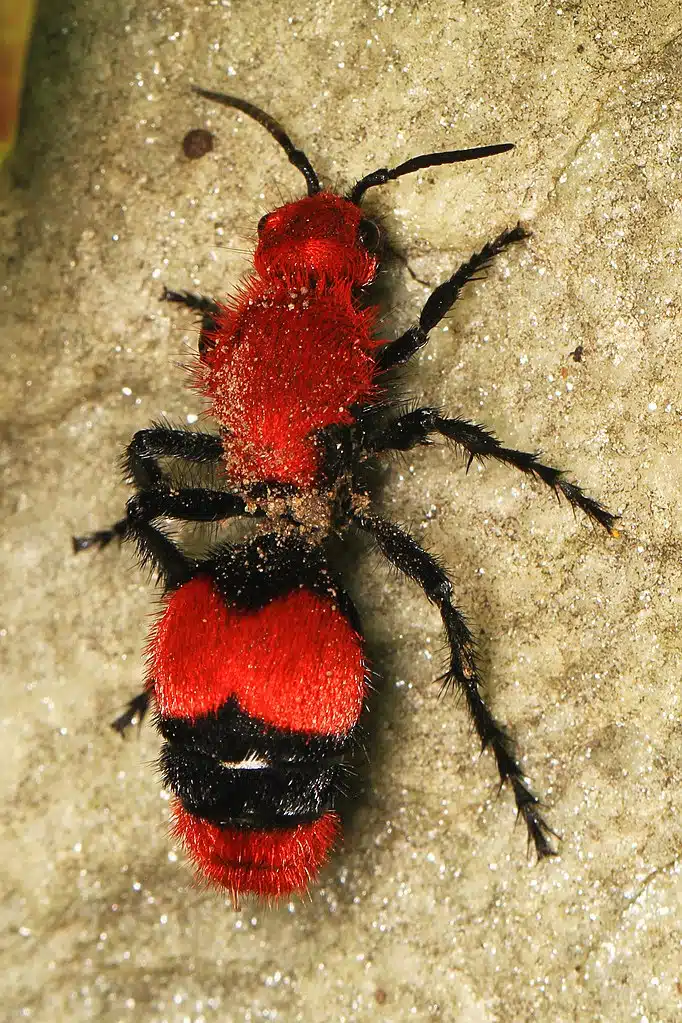
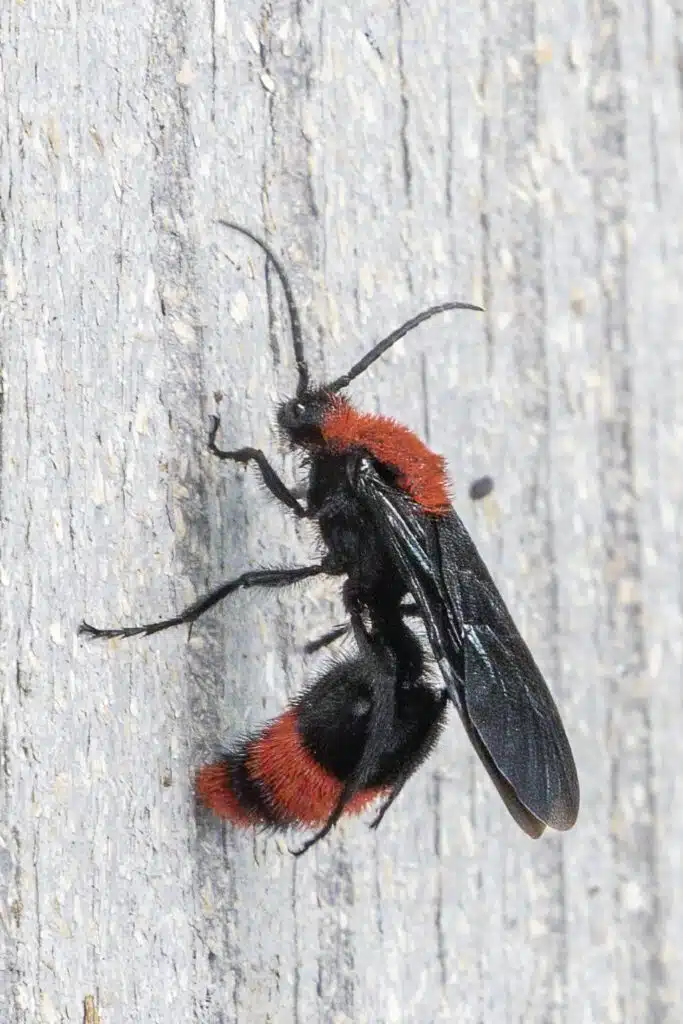
Cow Killers are part of a wider group of parasitoid wasps also known as Velvet Ants.
They have red and black coloring. Black is the main body color with red or red-orange coloring covering the body as well.
The thorax and the abdomen are the areas of brighter color in these Red Velvet ants.
The colors of the species are aposematic, which means they signal a potential risk to predators.
Cow Killers generally measure anywhere between 0.6 and 1 inch. Males tend to be larger than females but the differences between sex sizes may vary according to the region as well.
Common traits of Cow Killers:
- Females have a painful venomous sting
- The sting is not fatal to humans or cows
- Only males have wings
- They take a defensive posture when facing a predator
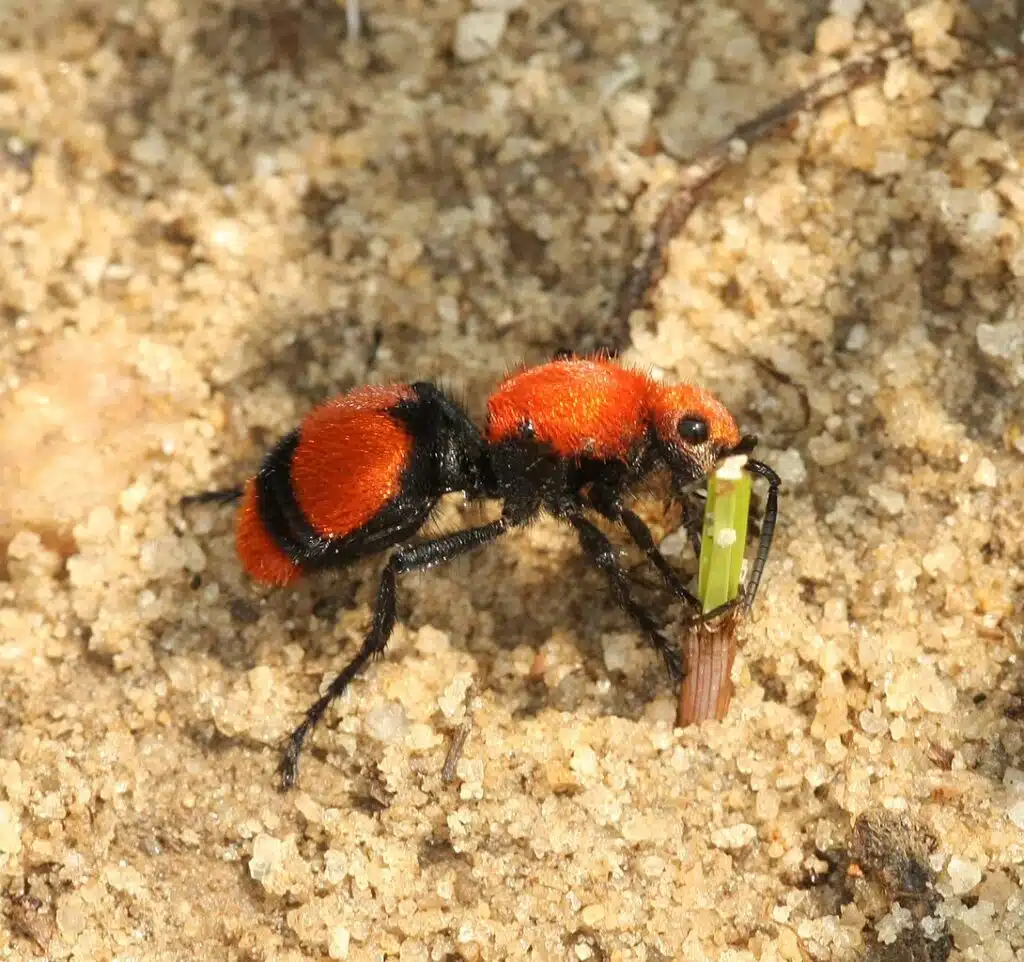
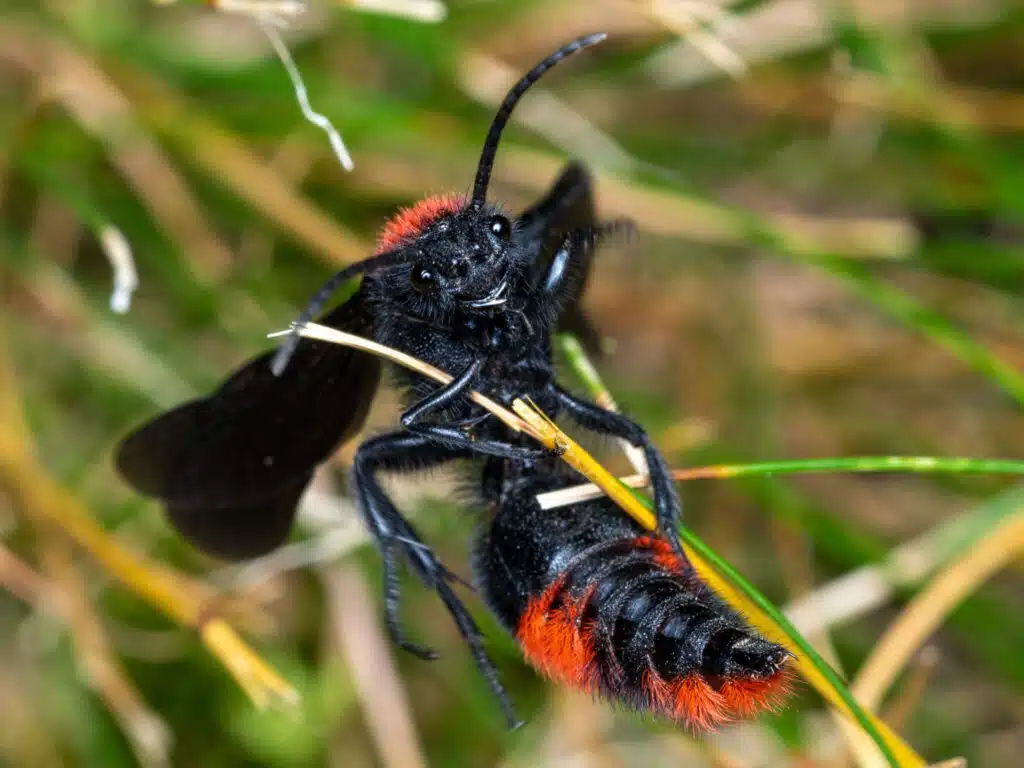
Life Cycle and Behavior
Male and female Cow Killers go through a lengthy mating process which marks the beginning of their life cycle.
The male Cow Killer Red Velvet Ant flies looking for a female.
Once mated, the female is responsible for laying an egg and for finding a suitable place to lay the egg.
This species is a parasitoid which means it goes into the nests of various other species, mainly Bumble bees, to lay its eggs.
Cow Killers lay eggs in the ground nests of solitary digger bees or the nests of ground beetles.
Female red velvet ants have very specific preferences when it comes to the species it attacks as a parasitoid.
- Larvae of Diptera flies
- Larvae of Coleoptera beetles
- Larvae of cockroaches and termites
- Larvae of some butterflies and moths
Females take on the appearance of ants which means they cannot fly to find a nesting place to lay eggs.
They crawl and move around with rapid direction changes, similar to real ants.
Distribution
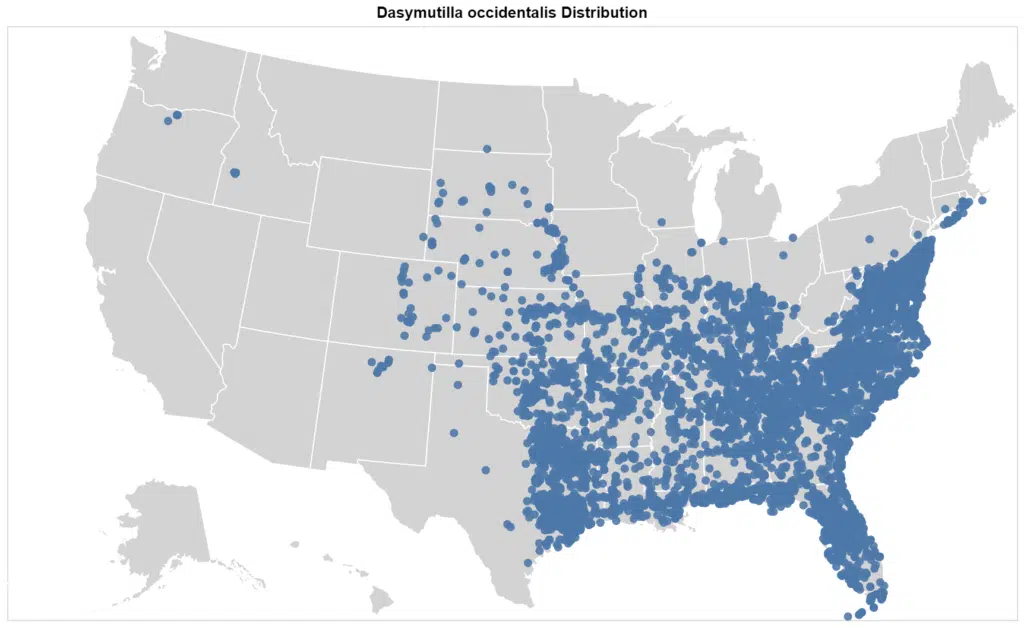
Cow Killers ants are common around the world. The Southeastern United States marks the North American territory with the most Multillidae species.
It’s believed more than 400 types of Multiliidae inhabit this area of the country.
Cow Killers are highly present in Florida and their range expands West to Texas.
Woodlands and the edges of woodlands mark the ideal habitat for these types of Red Velvet Ants.
However, the species might also be present in populated areas such as cities and villages, particularly in those close to woodlands.
Cow Killers may be found in the garden, on the lawn, or crawling under foliage even in areas people live.
Some US states even report Cow Killers as being the most common Multillidae species.
This is the case of Nebraska, one of the Northwestern frontier states of the species.
Diet
The complex diet of Cow Killers changes with age. The larvae of the species feed on wasps or the larvae of bees while adults mostly feed on nectar. Here are all the foods Cow Killers are associated with.
- Bumble Bees
- Beetles
- Wasps
- Nectar
Some types of Cow killers such as the European Velvet Ant may attack bee hives. It’s here that its emerging larvae start to feed on the larvae of bees.
Defense Mechanisms
Cow Killers are mostly known for their potent sting. But these types of mimicking wasps have many more defense mechanisms as follows.
Bright coloring (male and female)
Aposematic coloring is characteristic of Cow Killers. This is a type of bright coloring that acts as a warning sign to potential predators.
The bright color of the species acts as an initial warning sign to its predators. Most of its predators such as birds learn to stay away from the species as bright colors are associated with venomous or dangerous prey.
This is also the case with Cow Killers which are mildly venomous.
Squeaking warning signs (male and female)
Cowk Killers are further known to make distinct high-pitched sounds. These are similar to squeaking sounds and they represent one of the ideal ways for the species to keep predators away without using a stinger.
Since males can’t sting, it’s the male Cow Killer that mostly relies on the squeaking sound to keep all types of predators away and to communicate with other members of its species.
This sound can be heard from a short distance of up to several feet.
Sting (female)
Only female Cow Killers can sting. They have a long stinger males lack which helps separate the sexes or identify males from females.
The sting of the species is only used as a last resort as Cow Killers aren’t even as aggressive as they’re often assumed to be.
Quick movements (male and female)
Müllerian mimicry is specific to these types of wasps. This type of mimicry makes them look similar to ants but their mimicry tactics also involve moving similarly to ants.
A type of imprecise or moving pattern that’s also fast can make some species associate these wasps with ants.
Cow killers have rapid movements which help them evade different types of predators such as snakes.
Strong exoskeleton (male and female)
One of the unknown secrets of velvet ants is the pure strength of their exoskeleton. The species is considerably tougher to break than most other types of wasps and bees.
Some tests show that Cow Killers are more than 10 times tougher in exoskeleton compared to bees.
As a result, not all types of predators can eat Cow Killers, even if they can catch them.
Released odor (male and female)
Another trait the species is known for is its capacity to release a bad odor.
This odor is released only in the presence of a potential threat. It aims to signal the predators of prey that’s now worth eating.
This odor might also be released in the presence of humans when cornered as people may also be perceived as a threat.
Cow Killer odor isn’t particularly harmful to humans.
How strong is the sting of the Cow Killers?
The sting of Cow Killers is very painful. High amounts of pain are described by those stung.
A long stinger that measures almost half of the size of the female’s body is used against prey and people.
Cow Killers only sting humans when handled or when touched on the ground.
The sting itself is extremely painful but not life-threatening or dangerous to humans.
As a last resort defensive mechanism, the sting of Cow Killers deters most predators and prompts them to release the captured wasp.
The venom of the species isn’t very potent and the sting of the female Cow Killer isn’t aimed at killing.
While myths say the sting can kill cows, it turns out most predators aren’t killed by the sting.
The Cow Killer’s sting aims to send a quick shock wave of pain to the predator which promptly lets it go.
A quick escape is possible at this time allowing Cow Killers to disappear unharmed and also the predator to come out unharmed once the pain subsides.
The levels of pain associated with the sting vary as well.
Excruciating pain is specific to the time immediately after the sting. Some measurements show this high level of pain persists for up to 30 minutes.
Low levels of pain may persist for hours and even a full day.
Skin-level pain might still be present days after the sting.
One of the first things people can do to limit the pain and its lasting period is to remove the stinger immediately.
Large and visible, the stinger gets broken and stuck in the skin. You may remove it with your fingers or with tweezers.
This is also a good time to start assessing personal symptoms and the way you feel.
High levels of pain are still normal for up to 30 minutes and even after you remove the stinger.
Some allergic reactions already prompt a visit to the nearest hospital. In the worst-case scenario, the stung person can enter anaphylactic shock.
Despite the information on the species, a Cow Killer sting is not treated as a medical emergency in The United States. Only allergic reactions to the sting of Cow Killers require medical attention.